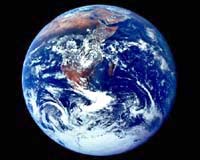
 |
Entitled "Meeting the Millennium Development Goals," their report is a mid-course appraisal of a 25-year plan ending in 2015 to dramatically improve sanitation conditions and access to clean drinking water throughout the world. The report covers the period from 1990-2002.
The World Health Organization (WHO) and the United Nations Children's Fund (UNICEF) say the plan is "on track" for drinking water, but that half a billion people -- mainly in rural Africa and Asia -- fell short of the sanitation targets set for 2002.
The world's poorest and least developed nations, notably those in sub-Saharan Africa, suffer most from the diseases caused by poor hygiene, which hit children hardest of all.
"The growing disparity between the have and the have-nots in terms of access to basic services is killing around 4000 children every day and underlies many more of the 10 million child deaths every year," Bellamy said. "We have to act now to close this gap or the death toll will certainly rise," she added.
Diarrhea kills 1.8 million persons every year, mainly children under five, and the search for scarce drinking water results in 40 billion hours of lost work in Africa alone, the report says.
But there are also "worrying trends," aggravated by rapid industrialization in many industrialized countries, where the percentage of people with access to clean drinking water and basic sanitation actually dropped by two percent between 1990 and 2002.
In the ex-Soviet Union, for example, only 83 percent of the population live in conditions of adequate sanitation.
"Water and sanitation are among the most important determinants of public health," noted WHO Director-General Lee Jong-wook. "Wherever people achieve reliable access to safe drinking water and adequate sanitation they have won a major battle against a wide range of diseases," he added.
The report did underline some encouraging signs. Efforts to reduce the number of people without access to clean drinking water to 800 million by 2015 are on track, it said, noting that an additional 1.1 billion people have gained such access in the last 12 years.
Progress on this front has been especially rapid in Asia, where the percentage of the population with access to potable water has increased from 77 to 83 since 1992. But there are still 675 million people in Asia, the report estimates, that draw their drinking water from unsafe sources such as polluted rivers and lakes.
The situation in sub-Saharan Africa is more contrasted. Angola, the Central African Republic, Chad, Malawi and Tanzania all expanded the populations with access to drinkable water by 50 percent. But the region as a whole has only increased that access by nine percent since 1990, with the result that 58 percent of the area's population now regularly drinks clean water.
As for hygiene, the report acknowledges that gains made have been partly offset by population growth and urbanization. From 1990 to 2002, the percentage of the world's inhabitants with access to basic sanitation increased from 49 percent to 59 percent, still a long way from the 2015 objective of 75 percent.
Once again, progress was most rapid in Asia, notably in China, where the percentage increased from 24 percent to 45 percent. In sub-Saharan Africa the percentage of the population with access to basic sanitation is currently 36 percent, up a modest four percent since 1990.
The average for developing nations is 49 percent, half of the 98 percent rate of industrialized nations.
TERRA.WIRE |